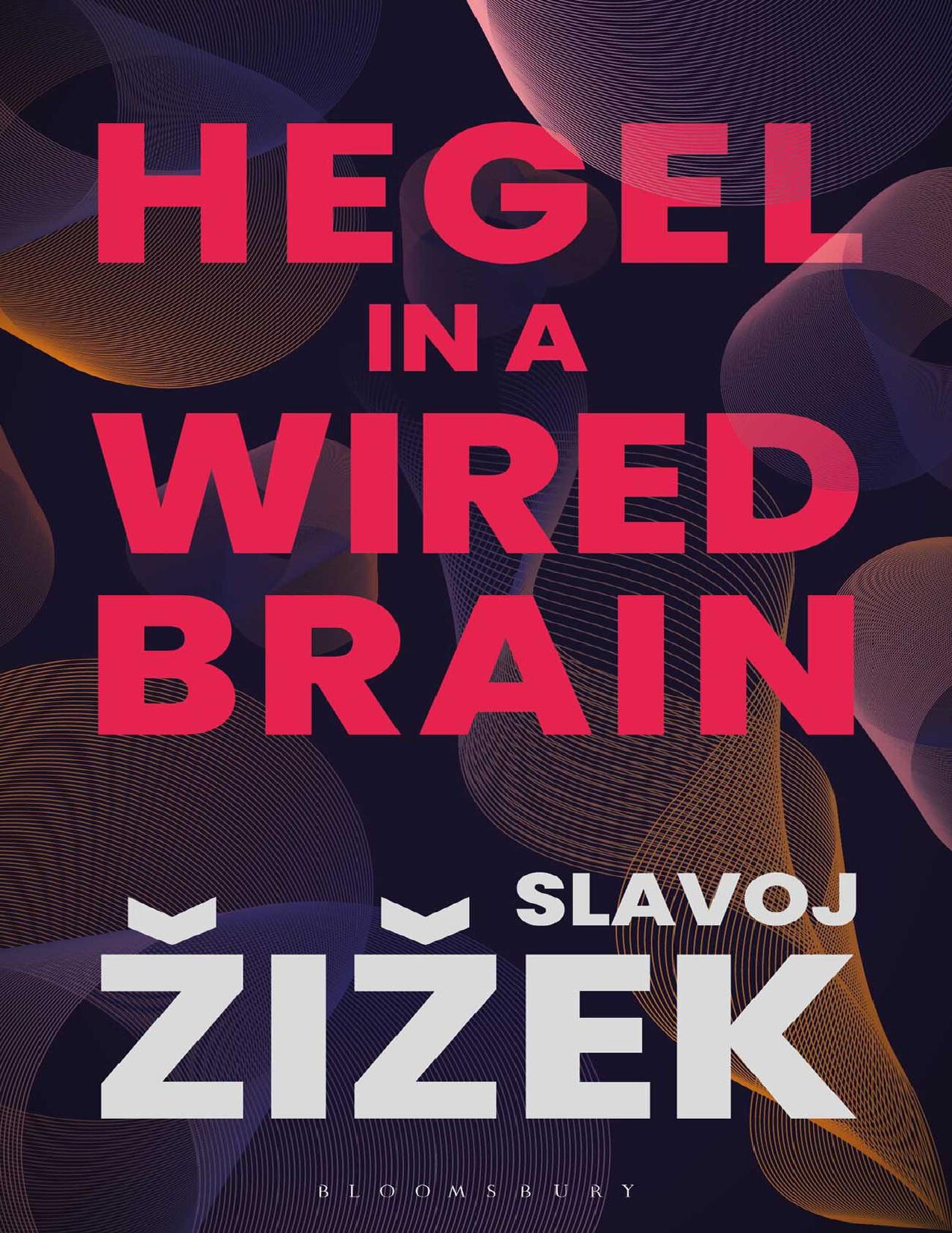Hegel in A Wired Brain by Slavoj Žižek

Author:Slavoj Žižek [Žižek, Slavoj]
Language: eng
Format: epub, pdf
Publisher: Bloomsbury Publishing
Published: 2020-06-25T00:00:00+00:00
7
A Literary Fantasy
The Unnamable Subject of Singularity
One should risk a daring hypothesis here: what if Singularity is not (or, rather, will not be) an immersion in a collective space but an extremely solipsistic state where each Self (reduced to its selflessness, no longer a self as opposed to others in an intersubjective space) will function similar to what Beckett renders in The Unnamable – we read here Beckett with Jacques-Alain Miller who, in his seminar of 2006–2007, describes the effort of Lacan’s last years to delineate the contours of One alone before the Other, of a hallucination before symbolic reality, of meaningless lapses prior to any signifying articulation.1 Lacan opposes here two axes. One is the axis of the symbolic Unconscious where, in transference, the subject relates to an Other, where symptoms have a (supposed) meaning and, as such, wait to be historicized, integrated into a symbolic narrative. The other is the axis of the real Unconscious where the subject (or, rather, the subjectless Self) is all alone:
Who is this self? – this self that knows that it has neither tail nor head, neither meaning nor interpretation. We have here an it that is not, as Lacan was able to play with it, the one of the unconscious, but an it that is a self.”2 “The pivot is that here, one considers the One-all-alone. At least two allusions from Lacan, in this text, find a way to be ordered from this all-alone. He says: “There is no friendship there, in that space that supports this unconscious.” No friendship that can be the support of the unconscious.3
“Friendship” stands here for the link from the one to the other, between subjects but also between signifiers – signification arises only through such “friendship” where one signifier interprets the other.4 With the subjectless Self that is all alone, there is also speech, but this speech functions as pre-symbolic erratic hallucination, a hallucination without law: “The hallucination does not obey the laws of language, either those of connection or of substitution, and it appears as being independent of the intersubjective game.”5 So, again, on the one side, we have the intersubjective game of transference through which symptoms are decoded in their meaning and thus historicized, integrated into the subject’s life story, and, on the other side,
we have a real cut off from speech, a real which “expects nothing from speech,” and which “chatters all alone” (cause tout seul). We know now to give its value to this all alone, which signals that we are not in history, in hysteria, in the one and the other, but, on the contrary, on the side of the solitary. Lacan even adds that the real appears as a “noise in which one can hear anything and everything”.6
This difference between speech as symptom pointing towards meaning, and speech as “chatter all alone,” composed of sinthomes which just condense jouissance, does not overlap with the opposition between hysteria and psychosis; it divides the space of psychosis itself into paranoia (in which
Download
This site does not store any files on its server. We only index and link to content provided by other sites. Please contact the content providers to delete copyright contents if any and email us, we'll remove relevant links or contents immediately.
The remains of the day by Kazuo Ishiguro(7552)
Tools of Titans by Timothy Ferriss(6950)
The Black Swan by Nassim Nicholas Taleb(6192)
Inner Engineering: A Yogi's Guide to Joy by Sadhguru(5897)
Giovanni's Room by James Baldwin(5880)
The Way of Zen by Alan W. Watts(5800)
The Six Wives Of Henry VIII (WOMEN IN HISTORY) by Fraser Antonia(4791)
The Power of Now: A Guide to Spiritual Enlightenment by Eckhart Tolle(4756)
Astrophysics for People in a Hurry by Neil DeGrasse Tyson(4620)
Asking the Right Questions: A Guide to Critical Thinking by M. Neil Browne & Stuart M. Keeley(4576)
12 Rules for Life by Jordan B. Peterson(3734)
The Ethical Slut by Janet W. Hardy(3504)
Skin in the Game by Nassim Nicholas Taleb(3462)
Housekeeping by Marilynne Robinson(3402)
The Art of Happiness by The Dalai Lama(3385)
Double Down (Diary of a Wimpy Kid Book 11) by Jeff Kinney(3276)
Skin in the Game: Hidden Asymmetries in Daily Life by Nassim Nicholas Taleb(3264)
Walking by Henry David Thoreau(3235)
12 Rules for Life: An Antidote to Chaos by Jordan B. Peterson(3204)
